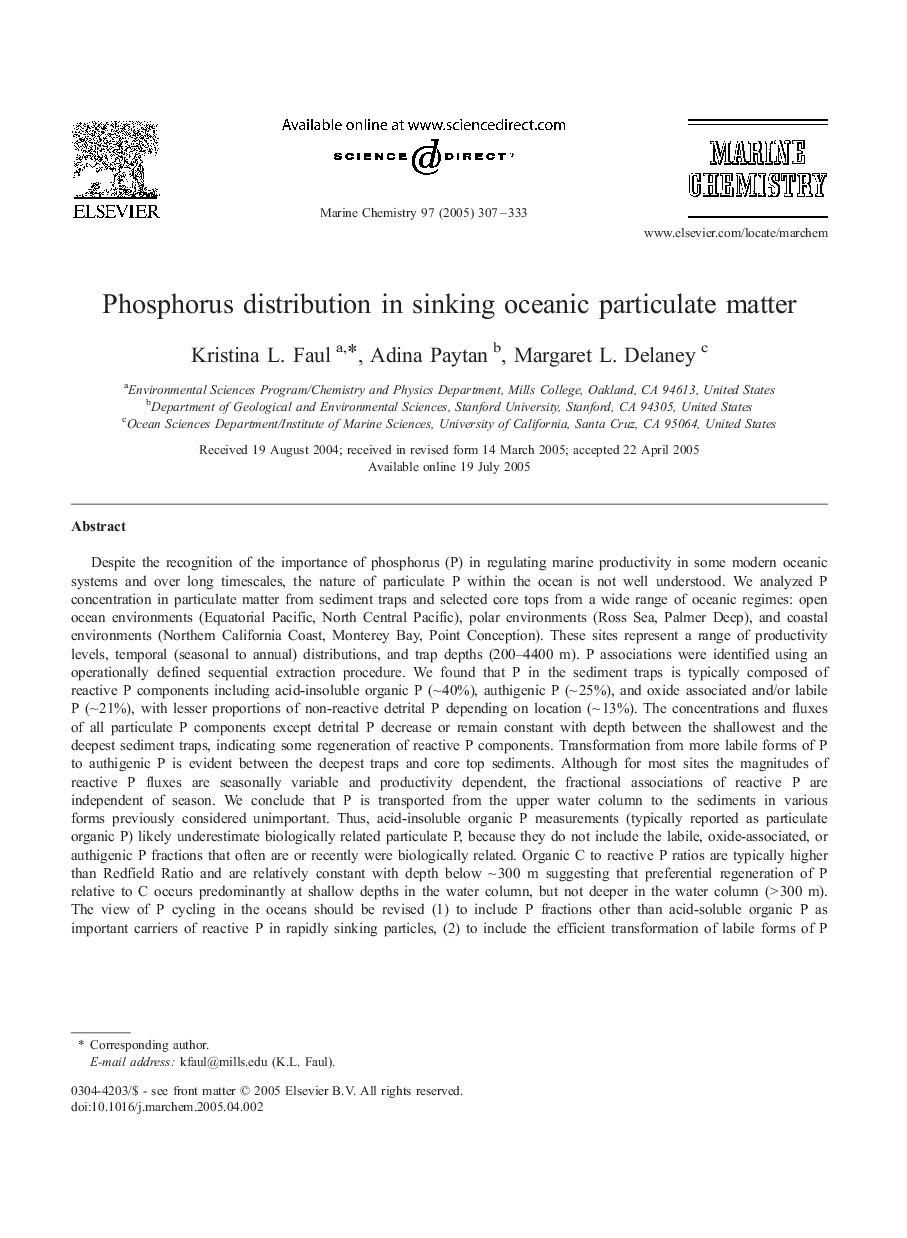| Article ID | Journal | Published Year | Pages | File Type |
|---|---|---|---|---|
| 9758334 | Marine Chemistry | 2005 | 27 Pages |
Abstract
Despite the recognition of the importance of phosphorus (P) in regulating marine productivity in some modern oceanic systems and over long timescales, the nature of particulate P within the ocean is not well understood. We analyzed P concentration in particulate matter from sediment traps and selected core tops from a wide range of oceanic regimes: open ocean environments (Equatorial Pacific, North Central Pacific), polar environments (Ross Sea, Palmer Deep), and coastal environments (Northern California Coast, Monterey Bay, Point Conception). These sites represent a range of productivity levels, temporal (seasonal to annual) distributions, and trap depths (200-4400 m). P associations were identified using an operationally defined sequential extraction procedure. We found that P in the sediment traps is typically composed of reactive P components including acid-insoluble organic P (â¼Â 40%), authigenic P (â¼Â 25%), and oxide associated and/or labile P (â¼Â 21%), with lesser proportions of non-reactive detrital P depending on location (â¼Â 13%). The concentrations and fluxes of all particulate P components except detrital P decrease or remain constant with depth between the shallowest and the deepest sediment traps, indicating some regeneration of reactive P components. Transformation from more labile forms of P to authigenic P is evident between the deepest traps and core top sediments. Although for most sites the magnitudes of reactive P fluxes are seasonally variable and productivity dependent, the fractional associations of reactive P are independent of season. We conclude that P is transported from the upper water column to the sediments in various forms previously considered unimportant. Thus, acid-insoluble organic P measurements (typically reported as particulate organic P) likely underestimate biologically related particulate P, because they do not include the labile, oxide-associated, or authigenic P fractions that often are or recently were biologically related. Organic C to reactive P ratios are typically higher than Redfield Ratio and are relatively constant with depth below â¼Â 300 m suggesting that preferential regeneration of P relative to C occurs predominantly at shallow depths in the water column, but not deeper in the water column (> 300 m). The view of P cycling in the oceans should be revised (1) to include P fractions other than acid-soluble organic P as important carriers of reactive P in rapidly sinking particles, (2) to include the efficient transformation of labile forms of P to authigenic P in the water column as well as in sediments, and (3) to consider the occurrence of preferential P regeneration at very shallow depths.
Keywords
Related Topics
Physical Sciences and Engineering
Chemistry
Chemistry (General)
Authors
Kristina L. Faul, Adina Paytan, Margaret L. Delaney,
